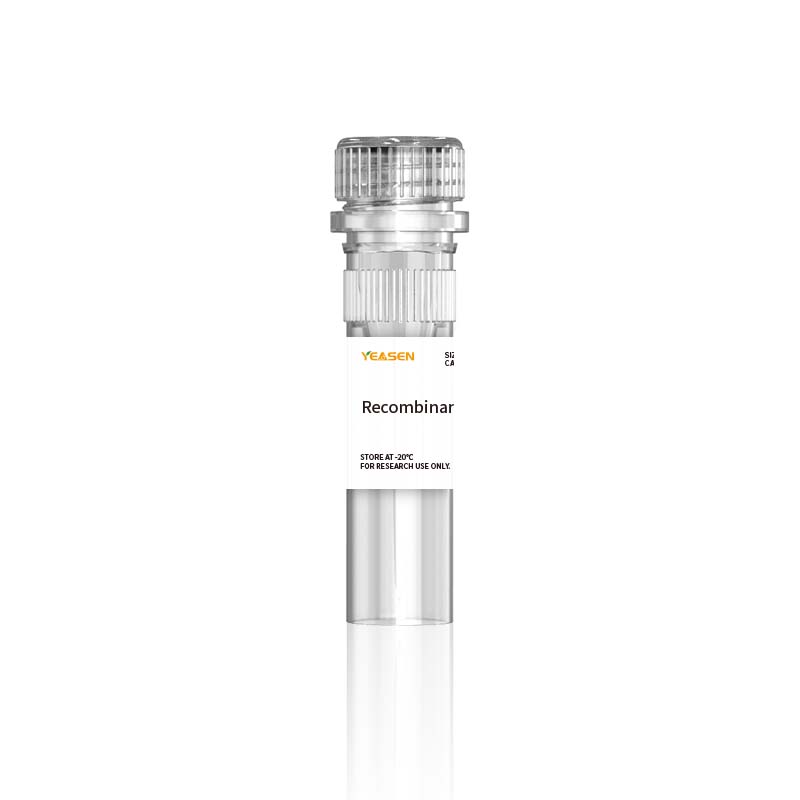Beschreibung
CD31, also known as platelet endothelial cell adhesion molecule-1 (PECAM-1), is a 130 kDa heavily glycosylated transmembrane protein belonging to the immunoglobulin (Ig) superfamily of cell adhesion molecules. CD31 is highly expressed on endothelial cells and at a lower level on platelets, granulocytes, macrophages, dendritic cells, T and B cells, and natural killer (NK) cells. It is involved in cell adhesion and is required for transepithelial migration of leukocytes (TEM). CD31 is composed of an extracellular domain (ECD) of 574 amino acids (aa) containing six Ig-like domains, a transmembrane domain, and a 118 aa cytoplasmic domain. The latter undergoes alternative splicing which generates multiple isoforms showing altered adhesive properties compared to full length CD31.CD31 acts as a homophilic receptor through its extracellular domain and is involved in downstream signaling via its cytoplasmic domain. This domain contains highly conserved ITIM motifs which, once tyrosine phosphorylated, recruit and activate the signaling molecules Src and SHP-2. The resulting inhibition of TCR signaling increases the activation threshold of T cells, thus reinforcing peripheral tolerance and preventing development of autoimmunity. CD31 additionally regulates immune responses by acting as a key inhibitory receptor in dendritic cell development.
Specifications
|
Synonyms |
PECAM-1; EndoCAM; PECA1; CD31; FLJ34100; FLJ58394; GPIIA |
|
Uniprot No. |
P16284.1 |
|
Source |
Recombinant CD31/PECAM-1 Protein is expressed from HEK293 Cells with His tag at the C-terminal. It contains Gln28-Lys601. |
|
Molecular Weight |
Approximately 65.6 kDa. Due to glycosylation, the protein migrates to 80-90 kDa based on Tris-Bis PAGE result. |
|
Purity |
> 95% as determined by SDS-PAGE and HPLC. |
|
Endotoxin |
< 1.0 EU per 1μg of the protein by the LAL method. |
|
Formulation |
Lyophilized from 0.22μm filtered solution in 50mM Tris, 150mM NaCl (pH 7.5). Normally 5% trehalose is added as protectant before lyophilization. |
|
Reconstitution |
Centrifuge tubes before opening. Reconstituting to a concentration more than 100 μg/mL is recommended (usually we use 1 mg/mL solution for lyophilization). Dissolve the lyophilized protein in distilled water. |
Storage
Transported with ice packs. Store at -20℃ to -80℃, valid for one year.
After reconstitution, store unopened at -20 to -80°C for 3 to 6 months. After reconstitution, store at 2 to 8°C for 2 to 7 days.
It is recommended to store in aliquots and freeze for the first use to avoid repeated freezing and thawing.
Note
1. Avoid repeated freezing and thawing.
2. For your safety and health, please wear lab coat and disposable gloves when operating.
3. This product is for scientific research purposes only.
Product Data

Zahlung und Sicherheit
Ihre Zahlungsinformationen werden sicher verarbeitet. Wir speichern weder Kreditkartendaten noch Zugriff auf Ihre Kreditkarteninformationen.
Anfrage
Sie können auch mögen
FAQ
Das Produkt ist nur für Forschungszwecke bestimmt und nicht für die therapeutische oder diagnostische Anwendung bei Menschen oder Tieren. Produkte und Inhalte sind durch Patente, Marken und Urheberrechte von
Für bestimmte Anwendungen sind möglicherweise zusätzliche geistige Eigentumsrechte Dritter erforderlich.

